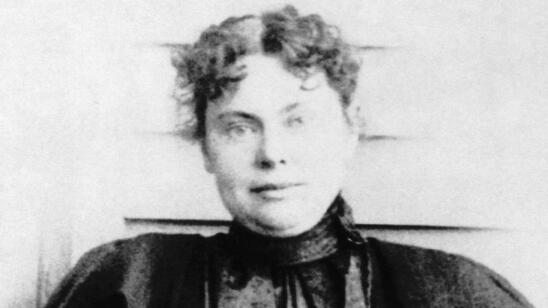By June 2013, the Staudte family of Springfield, Missouri, seemed cursed. Mark Staudte, husband to Diane and father of a son and three daughters, died in April 2012. On September 2 of that year, Shaun, Diane and Mark’s 26-year-old autistic son, passed away. In June 2013, their daughter Sarah, then 24, was hospitalized with organ failure.
On June 11, 2013, police received an anonymous call saying Diane might be responsible for the deaths in her family. A subsequent investigation uncovered that she’d poisoned her husband, son and daughter with antifreeze–and had acted with the help of her middle daughter and favorite child, Rachel.
Two Murders Go Undiscovered
After the death of Mark, 61, on April 8, 2012, Diane, then 50, told police her husband had been unwell for a few days, but hadn’t wanted to go to the hospital. Due in part to Mark’s unhealthy lifestyle, his death was attributed to natural causes.
[Stream episodes of Killer Cases in the A&E App.]
Guests noticed Diane wasn’t emotional at Mark’s memorial service.
An insurance payout helped Diane purchase a new home in a nicer area of Springfield. There, on September 2, 2012, Diane reported finding Shaun dead on his bedroom floor. She told police her son had a history of seizures and had been experiencing flu-like symptoms.
An anonymous report accused Diane of responsibility for Shaun’s death, but an autopsy determined he had died due to prior medical issues.
Testing for ethylene glycol, the harmful component of antifreeze, is not standard for autopsies. “If [medical examiners] get a case that’s referred to them that looks like a natural death, or a natural disease process…there’s no reason to go looking for something like ethylene glycol, or any of 100,000 other potential toxic compounds,” Dr. Robert Powers, a forensic toxicologist and associate professor at the University of New Haven, tells A&E True Crime.
The symptoms of ethylene glycol ingestion—nausea, vomiting, decreased level of alertness, slurred speech—can look like other ailments, making it difficult to identify.
Diane arranged no memorial service for her son.
An Investigation Begins
In June 2013, Sarah Staudte was hospitalized. Doctors could not find a cause for her failing kidneys and brain bleed.
On June 11, police received an anonymous call. The tipster, later revealed to be the Staudte family pastor, accused Diane of “two or three homicides,” referring to Mark and Shaun’s deaths and Sarah’s condition.
On June 13, an investigator visited the hospital where Sarah was receiving care. He learned that, as her daughter was fighting for her life, Diane had talked about an upcoming vacation.
The doctor overseeing Sarah’s case said he wondered if she’d been poisoned because no tests had explained her symptoms.
On June 20, 2013, Diane was interviewed by police. Though she initially denied any responsibility, eventually she admitted she’d poisoned family members with antifreeze. She’d mixed the antifreeze into her husband’s sports drinks, and into sodas for Shaun and Sarah.
As to a motive, Diane said of Mark, “I hated his guts. He would throw things at me. He would throw things at the kids. I guess I’d just had enough.”
She said of her autistic son, “Shaun would be interfering with whatever I would do,” and labeled him “more than a pest.”
Sarah was targeted because she had no job and had student loans to pay.
Diane’s Accomplice Is Revealed
Diane did not implicate anyone else during her interrogation. But a search of the Staudte house uncovered a journal kept by Rachel.
In one entry, dated June 13, 2011, Rachel wrote, “It’s sad when I realized how my father will pass on in the next two months… Shaun, my brother will move on shortly after… It will be tough getting used to the changes, but everything will work out.”
Rachel, then 22, had originally told police she had no knowledge of her mother’s crimes. On June 22, 2013, police interrogated her again. This time she admitted her involvement.
“Mom brought it up, and then we discussed,” Rachel said.
Rachel had helped Diane research killing methods, but said she’d objected to poisoning her siblings. “Shaun, we argued on a lot [about whether to kill him] because I still think we could have put him in an assisted living [facility], but she wanted him out.”
“Sarah was equally unneeded,” she added. “We could have found someplace else for her.”
Diane and Rachel only took Sarah to the hospital because Rachel “didn’t want another one to die in the house.” Rachel said the plan was to eventually kill her younger sister, then 11, as well.
Why did Rachel incriminate herself in her diary? Dr. Rod Hoevet, a clinical and forensic psychologist and an assistant professor at Maryville University, tells A&E True Crime that depends on how much control her mother had over her.
“Was she under the influence of mom? If the answer to that question is yes, then her writing was probably just about as innocent as can be,” Hoevet says. “She was writing down something that she was convinced of, like this is just the way it has to be.”
Where Are the Staudtes Now?
Powers says if someone ingests antifreeze, even if they survive initially, “there is still the risk they might die from the loss of kidney function.” Sarah lived, but suffered neurological damage. She now resides in an assisted-living facility.
The youngest Staudte daughter was placed in foster care.
After reaching a deal with prosecutors, Rachel pleaded guilty to two counts of second-degree murder and one count of first-degree assault on May 5, 2015. She was given two life sentences in March 2016, with eligibility for parole in 42.5 years.
Rachel is now incarcerated in the Women’s Eastern Reception Diagnostic and Correctional Center in Vandalia, Missouri.
At her sentencing, she told Sarah, “I’m sorry I couldn’t find the courage to stand up for what was right.”
Diane pleaded guilty to two counts of first-degree murder and one count of assault in January 2016. She submitted an Alford plea, which recognizes there is enough evidence to secure a conviction, but did not require her to admit to a crime.
Diane was sentenced to three life terms with no possibility of parole. She is incarcerated at the Chillicothe Correctional Center, in Chillicothe, Missouri.
In a 2022 interview with 20/20, Diane suggested she was not guilty. She said her husband had “people that are very dangerous” in his life and “somebody probably came in and gave him something.”
Diane’s attempt to deflect blame after her detailed confession is one more twist in an extraordinary case.
“Women don’t engage in a lot of violent crime as a general rule,” Hoevet says. “That a mother would be committing a crime against someone in her own family is already pretty unusual… Then the idea that she would bring her daughter into it to kill her own family members…and apparently convinced her of it, is so unusual.”
Related Features:
Toxic Endings: When Poison is the Murder Weapon
Guns, Knives, Hands: Why Killers Choose Specific Murder Methods
Stacey Castor and Other Women Who’ve Gone to Great Lengths to Kill Their Husbands


